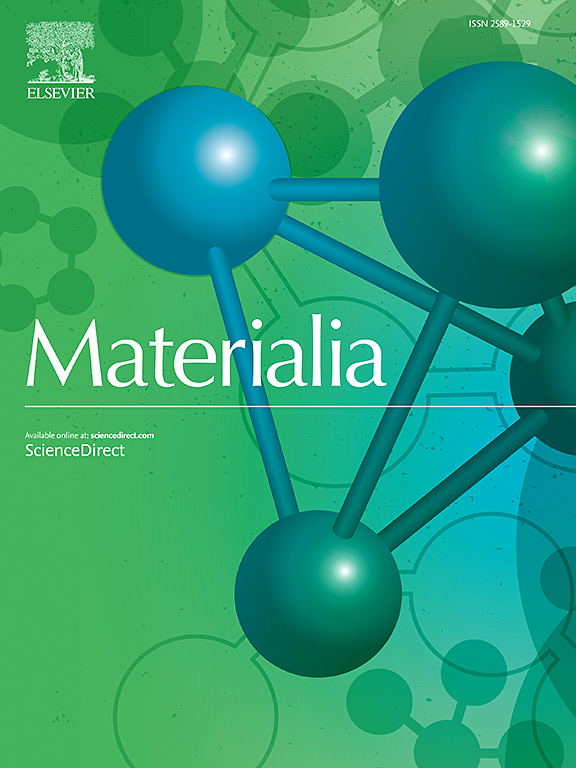Chemometric optimization of PVA nanocomposites: Synergistic effects of CNT, Cu, HEC-Ac, and hyperbranched polymers on mechanical properties
IF 2.9
Q2 MATERIALS SCIENCE, MULTIDISCIPLINARY
引用次数: 0
Abstract
This paper presents a novel approach to the custom design of polyvinyl alcohol (PVA) based nanocomposites, by using chemometric methods to identify optimal proportions of organic/inorganic reinforcements that enhance mechanical properties such as flexibility and strength. Employing material characterization techniques, such as scanning electron microscopy (SEM), confocal laser microscopy (CLSM), atomic force microscopy (AFM), and X-ray photoelectron spectroscopy (XPS), we elucidate the synergistic effects of hyperbranched polyester polyol polymers (Boltorn®H20), hydroxyethylcellulose with citric acid (HEC-Ac), carbon nanotubes (CNT), and Cu microparticles on the mechanical behaviour of PVA nanocomposites. The incorporation of CNT and Cu into a PVA (Young’s modulus: 5.4 GPa) increases stiffness by 30 %, which rises to 54 % with the addition of the H20 hyperbranched polymer. Our findings demonstrate that the incorporation of CNT, Cu, H20, and HEC-Ac at their maximal amounts in PVA allows the development of a hard material with a high capacity for strain-induced hardening. Conversely, the exclusion of Cu in these nanocomposites yields a soft material with an enhanced capacity for hardening. Furthermore, it would be feasible, for instance, to develop a coating for a flexible circuit by incorporating CNT, HEC-Ac, and H20. This material would be highly flexible and resilient, but under tensile stress, its behaviour would change, hardening to protect the circuit. This innovative methodology enables the customisation of nanocomposite properties to meet specific application needs, such as protective coatings for flexible circuits. Ultimately, the study underscores the innovative potential of multivariate design and chemometric techniques in enhancing the mechanical properties of PVA-based nanocomposites, paving the way for their application in diverse industrial and biomedical fields.

PVA纳米复合材料的化学计量优化:碳纳米管、Cu、HEC-Ac和超支化聚合物对力学性能的协同效应
本文提出了一种基于聚乙烯醇(PVA)的纳米复合材料定制设计的新方法,通过化学计量学方法确定有机/无机增强剂的最佳比例,以提高机械性能,如柔韧性和强度。利用材料表征技术,如扫描电子显微镜(SEM)、共聚焦激光显微镜(CLSM)、原子力显微镜(AFM)和x射线光电子能谱(XPS),我们阐明了超支化聚酯多元醇聚合物(Boltorn®H20)、带柠檬酸的羟乙基纤维素(HEC-Ac)、碳纳米管(CNT)和铜微粒对PVA纳米复合材料力学行为的协同作用。将碳纳米管和铜掺入PVA(杨氏模量:5.4 GPa)中,刚度提高了30%,而加入H20超支化聚合物后,刚度提高到54%。我们的研究结果表明,碳纳米管、Cu、H20和HEC-Ac在PVA中最大含量的掺入可以开发出具有高应变诱导硬化能力的硬材料。相反,在这些纳米复合材料中排除Cu会产生具有增强硬化能力的软材料。此外,例如,通过结合碳纳米管、HEC-Ac和H20来开发柔性电路的涂层也是可行的。这种材料将具有高度的柔韧性和弹性,但在拉伸应力下,它的行为会改变,硬化以保护电路。这种创新的方法可以定制纳米复合材料的特性,以满足特定的应用需求,如柔性电路的保护涂层。最后,该研究强调了多元设计和化学计量技术在提高聚乙烯醇基纳米复合材料力学性能方面的创新潜力,为其在各种工业和生物医学领域的应用铺平了道路。
本文章由计算机程序翻译,如有差异,请以英文原文为准。
求助全文
约1分钟内获得全文
求助全文
来源期刊

Materialia
MATERIALS SCIENCE, MULTIDISCIPLINARY-
CiteScore
6.40
自引率
2.90%
发文量
345
审稿时长
36 days
期刊介绍:
Materialia is a multidisciplinary journal of materials science and engineering that publishes original peer-reviewed research articles. Articles in Materialia advance the understanding of the relationship between processing, structure, property, and function of materials.
Materialia publishes full-length research articles, review articles, and letters (short communications). In addition to receiving direct submissions, Materialia also accepts transfers from Acta Materialia, Inc. partner journals. Materialia offers authors the choice to publish on an open access model (with author fee), or on a subscription model (with no author fee).
 求助内容:
求助内容: 应助结果提醒方式:
应助结果提醒方式:


